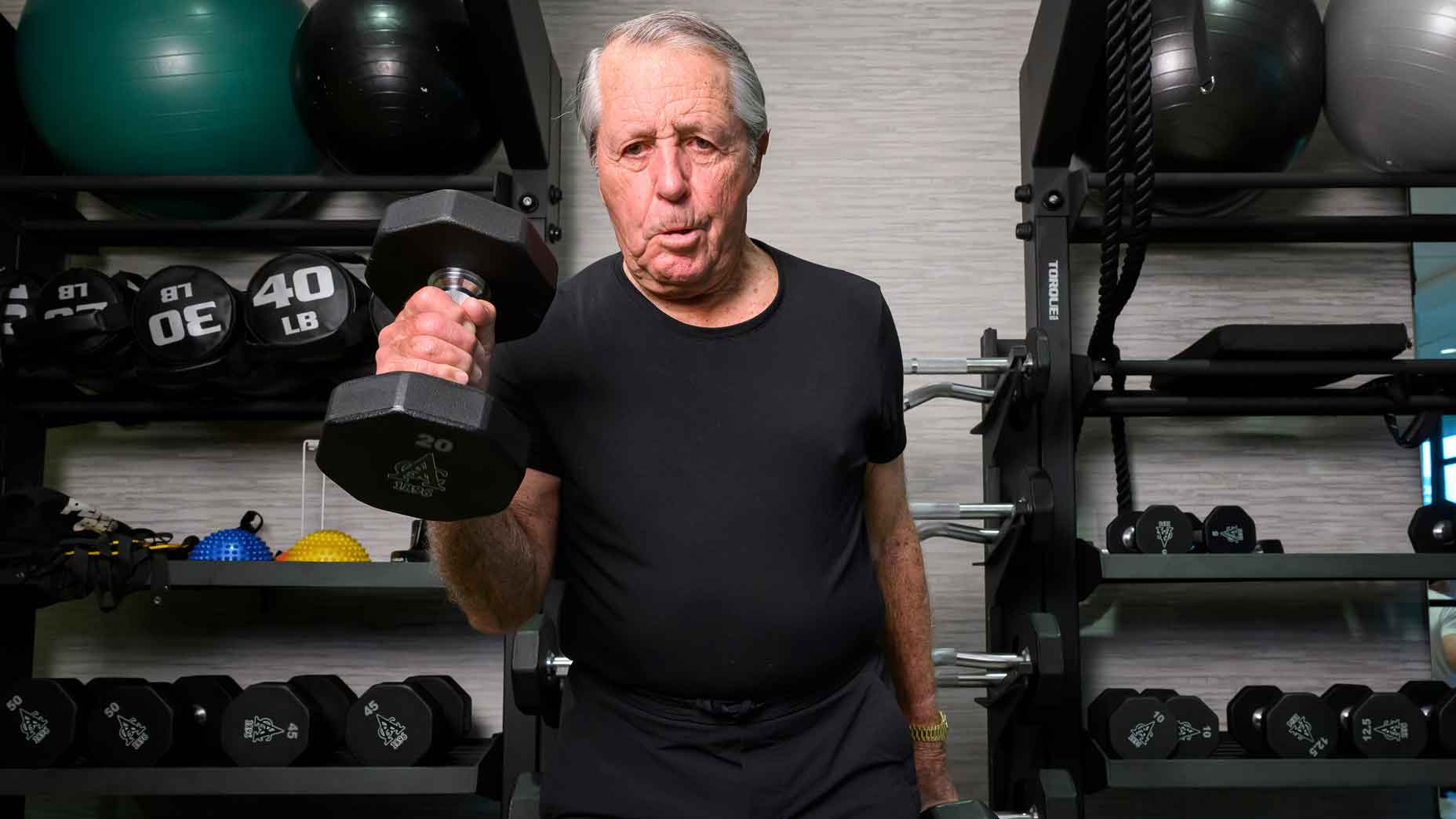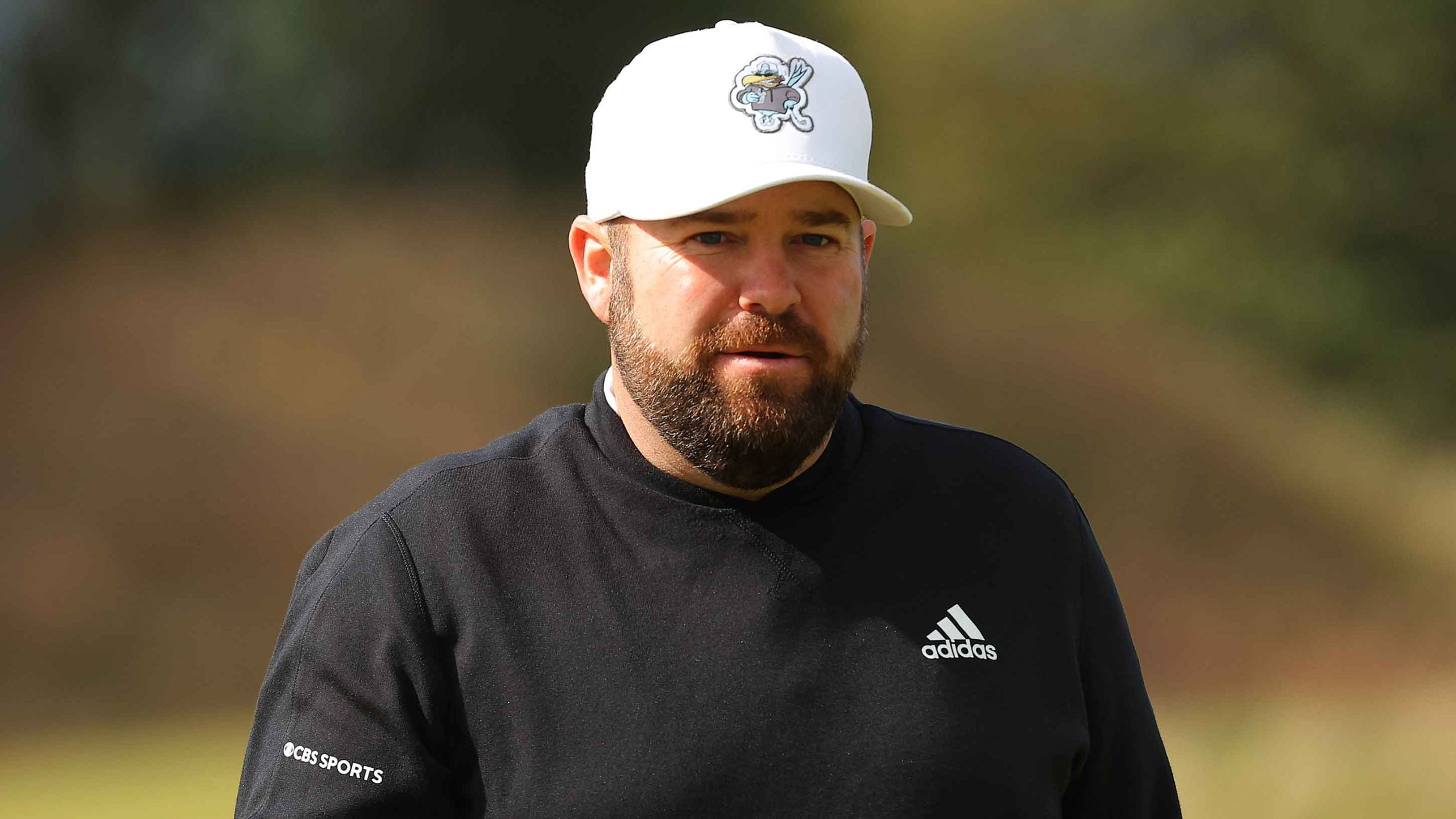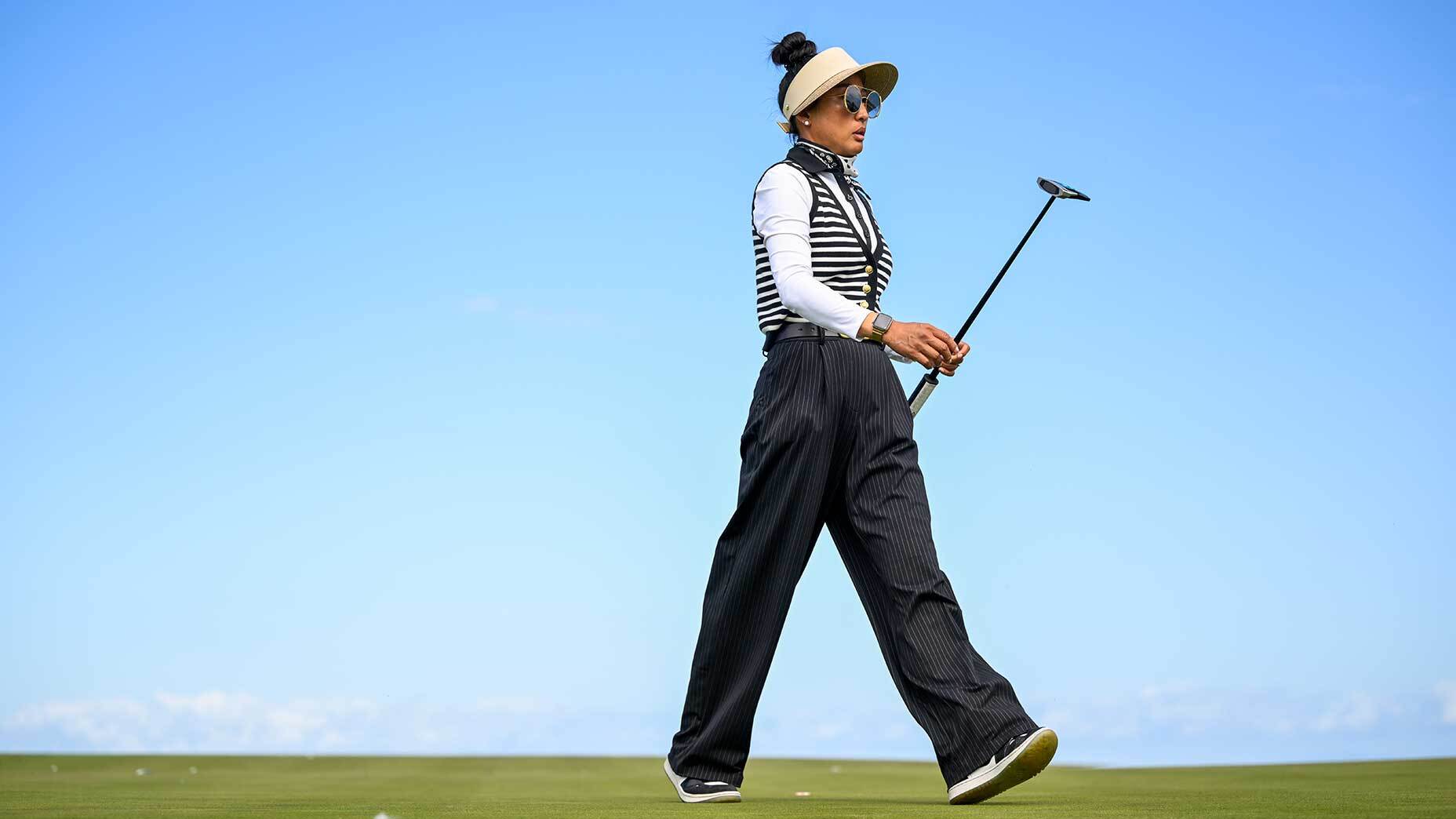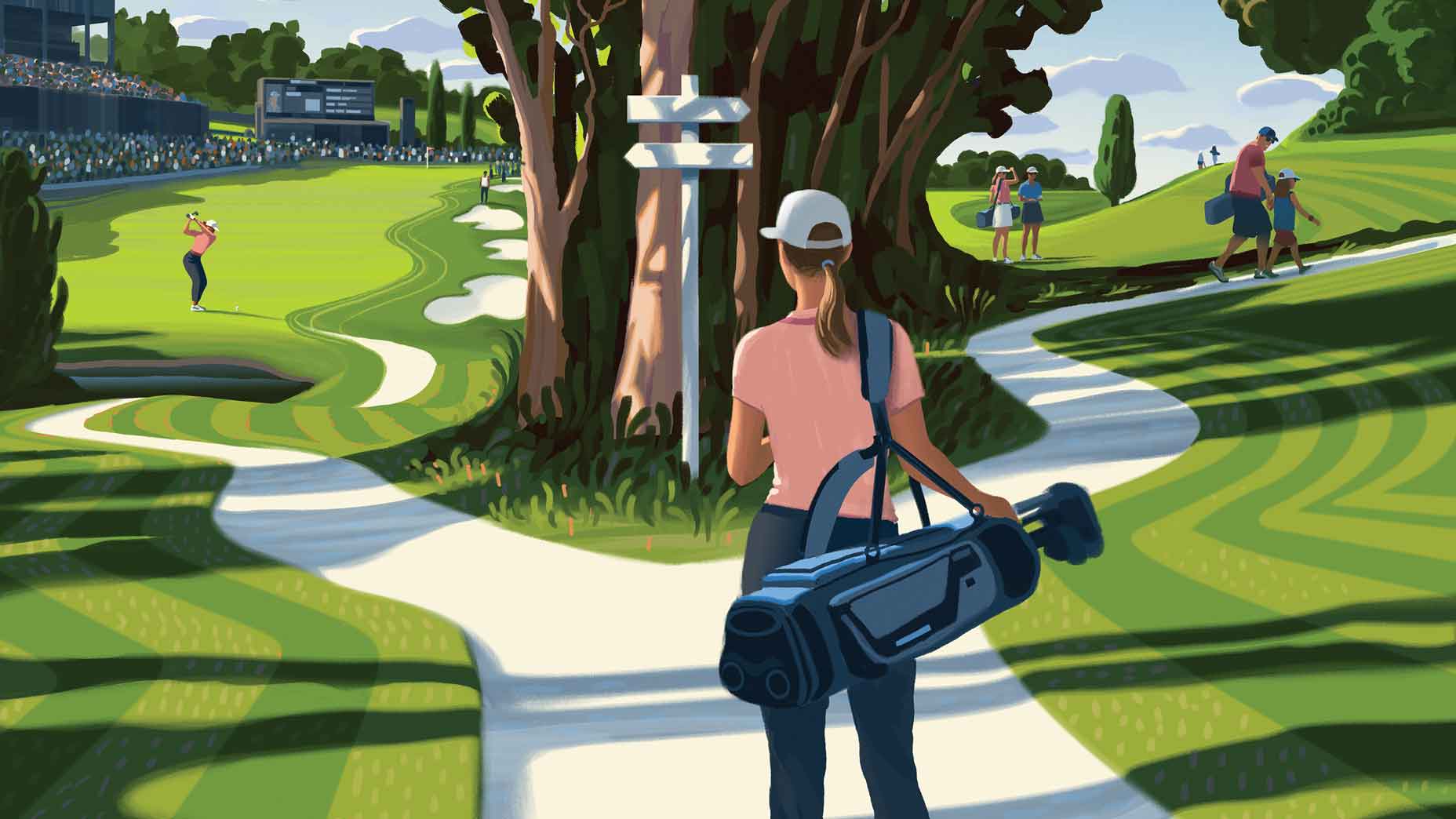Ah, 2023. The year everything changed … again. For the second straight year, we left 2023 with a drastically different perspective of professional golf than we entered. Now, as we look back at the year that was — with LIV major championships, Ryder Cup controversies and oh so many other stories — we’re remembering the 15 biggest moments that defined the year in golf. Let’s get digging.
Biggest Golf Moments of 2023 …
No. 15: Viktor Hovland’s arrival
No. 14: Fowler, Day back in the winner’s circle
No. 13: Brian Harman’s Open rout
No. 12: The Michael Block Party
No. 11: Wyndham Clark’s breakout
No. 10: Lilia Vu’s rise
No. 9: LIV Golf’s OWGR snub
No. 8: The players regain control
No. 7: Ciganda’s Spanish Solheim triumph
No. 6: Tiger Woods’ 2023 return
No. 5: Brooks Koepka’s PGA Championship triumph
No. 4: Ryder Cup gets testy
No. 3: Jon Rahm joins LIV Golf
Biggest Golf Moment of the Year No. 2: The USGA/R&A roll back the golf ball
If your correspondent’s highly unscientific focus group — i.e., his golf buddies and other random weekend players he informally polled at holiday parties — is any indication, the golf populous’ reaction to the golf-ball rollback plan the governing bodies announced earlier this month can be grouped into five primary categories
1. Hurrah! About time!
2. Hurrah! About time! (But they should have dialed it back even more.)
3. For shame! Like golf isn’t already hard enough?!
4. Ask me again in 2030 when the new ball-testing regulations actually affect me.
5. Rollback? What rollback?
However you feel about the forthcoming conformance measures — which, according to the governing bodies, will reduce the driving distance of the longest hitters (i.e., pros and elite amateurs) by 12-15 yards and players with slower swing speeds (most amateurs) by less than 5 yards — it’s big news; not quite our biggest story of the year but a runaway runner-up, largely because the new legislation, while still a ways off, will affect virtually every one of the planet’s 60-something million golfers, albeit to varying degrees.
The biggest bombers will have to adjust to hitting, say, 7-irons into greens instead of 8-irons or, alternatively, speed-train to swing even faster (a likely outcome), while amateurs with above-average swing speeds might find themselves feeling the need to move up a set of tees, if their courses don’t quietly push up the tees for them. Even the vast majority of golfers who will see little to no distance loss will still be required to buy new balls — and resist the urge to play 2027-era Pro V1s that they’ll inevitably find in the woods or plugged in creek beds.
The biggest impact will be felt not by golfers but by companies that make golf balls. The likes of Titleist, Callaway, TaylorMade and Bridgestone will have to cook up new manufacturing processes to ensure that their balls both conform and perform, an engineering challenge that no doubt has already begun in earnest. In the awkward limbo period (2028 and ’29) when pros will be mandated to play the new balls but not yet amateurs, the ballmakers will be on the hook to produce two different versions of the same models. But fret not. The ball-making companies are run by smart people. They will figure it out. The golf world will not spin off its axis.
Here’s the thing, though, that many golfers either might not realize or have forgotten: In implementing the new measures, the governing bodies didn’t go nearly as far as they could have, or, more to the point, had wanted to. Their original rollback proposal, announced in March, called for a Model Local Rule that would dial back distance only at the professional and elite amateur levels — but in a far more significant way than what the new plan calls for. But most pros, along with the PGA Tour and PGA of America and the ball manufacturers, pushed back hard against the proposal, effectively thwarting it.
“The overall impact would have been in the 25-yard range,” Thomas Pagel, the USGA’s chief governance officer, reminded two of my colleagues and me in a phone interview on the day the revised rollback plan was announced. “But being good partners and listening, we thought it was important to have to identify meaningful impact and really minimize disruption across all levels.”
Read: not start a civil war.
“And that’s ultimately how we landed here,” Pagel continued. “I’ll be honest, it’s a bit of a compromise, but it’s a compromise that we feel confident in.”
Pagel was being diplomatic, because the new plan was, of course, a major compromise.
Outraged by the golf-ball rollback? Try thinking about distance relativelyBy: Alan Bastable
The distance problem is only a problem at the top of the food chain: among the tiny percentage of golfers who can swing a driver north of 110 mph and blast a dimpled orb 300-plus yards. For everyone else, the only distance “problem” that exists is in our desire and inability to hit the ball farther. The governing bodies know this, which is why their original plan targeted only elite players.
But alas, the pressure from golf’s most powerful anti-bifurcation lobbyists — PGA Tour pros and equipment-makers — proved too intense, forcing the USGA and R&A to pivot to a universal rollback that only sorta-kinda addresses The Problem. Because while the new protocols will help to temper distance gains, stealing only a dozen or so yards from players who regularly turn par-5s into par-4s will not solve golf’s sustainability concerns, or convince developers to build shorter courses or suddenly bring your favorite 6,500-yard Seth Raynor design into the U.S. Open rota‚ a reality that Pagel is quick to acknowledge.
“This is not about identifying courses that the game has passed over and somehow bringing them back into the mix at the elite level,” Pagel said on our call. “This solution is not going to do that. I think some of those that are going to be upset we aren’t doing enough would want that to be the case. But what it is going to do is slow the pace of growth and perhaps slow the number of courses that are added to the list that the game is passed by.” Pagel added of the new regulations, “We feel like it’ll have an impact that won’t require us to come back straight away, and that’s the important thing.”
Not straight away — but rest assured, the governing bodies will be back with more testing changes, and perhaps not only with further modifications to ball limits. One of the more intriguing, if less talked-about, components of the December announcement is that the rulesmakers are also studying driver forgiveness for professionals. Some of the best players in the world feel like modern technology is too generous on off-center hits, thereby allowing Tier II drivers to keep pace with Tier I drivers in ways that they otherwise might not be able to. Effectively shrinking the sweet spot for professionals, by way of a Model Local Rule, could be one potential solution.
There are others. Stay tuned.











